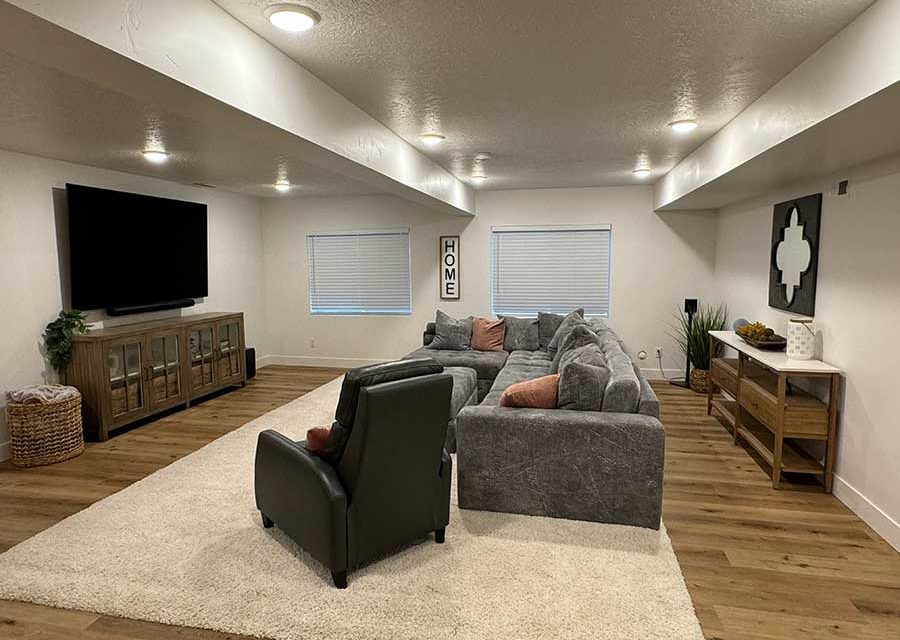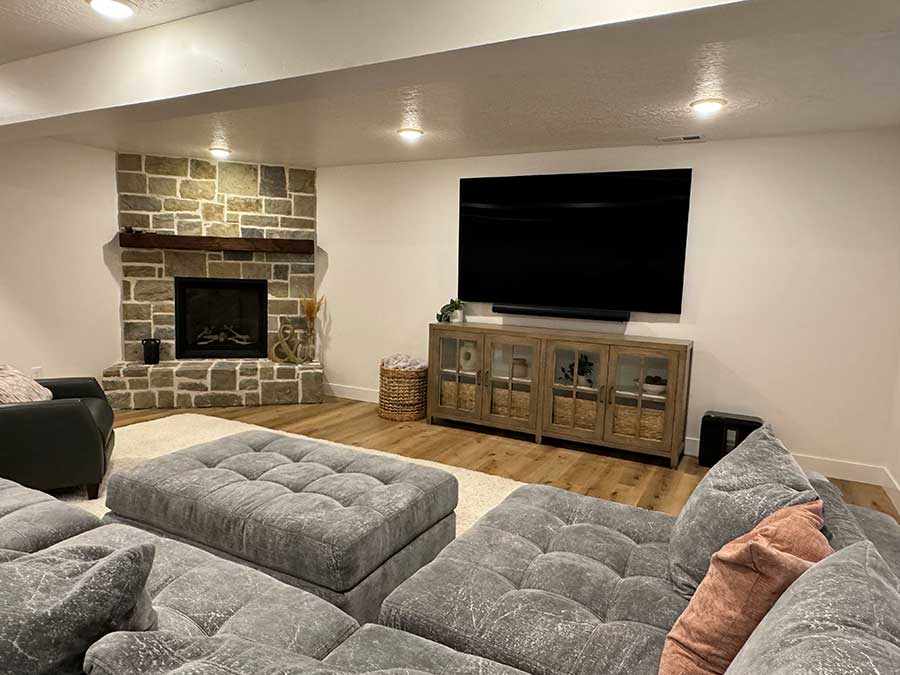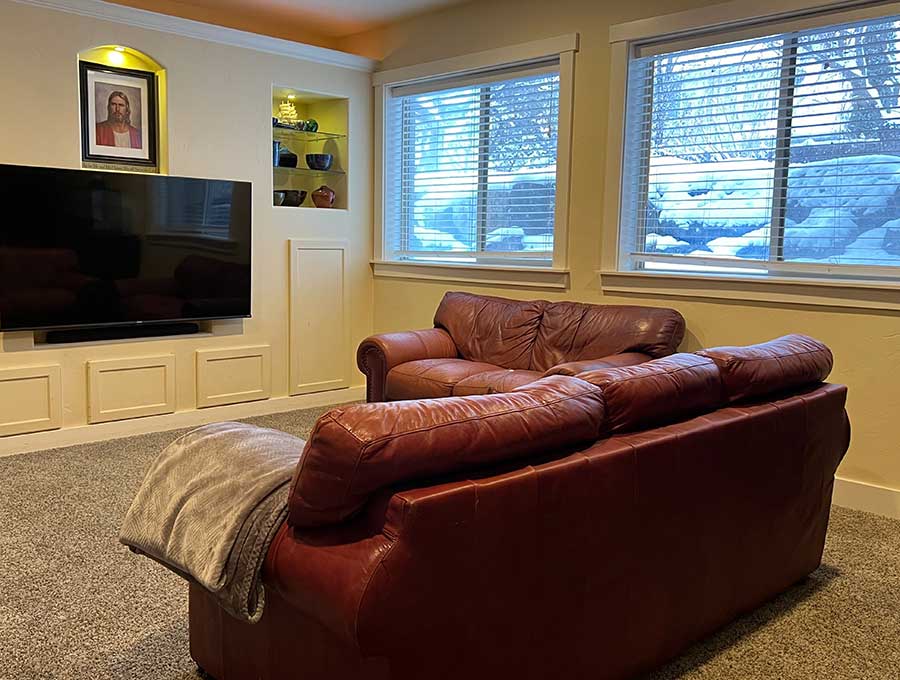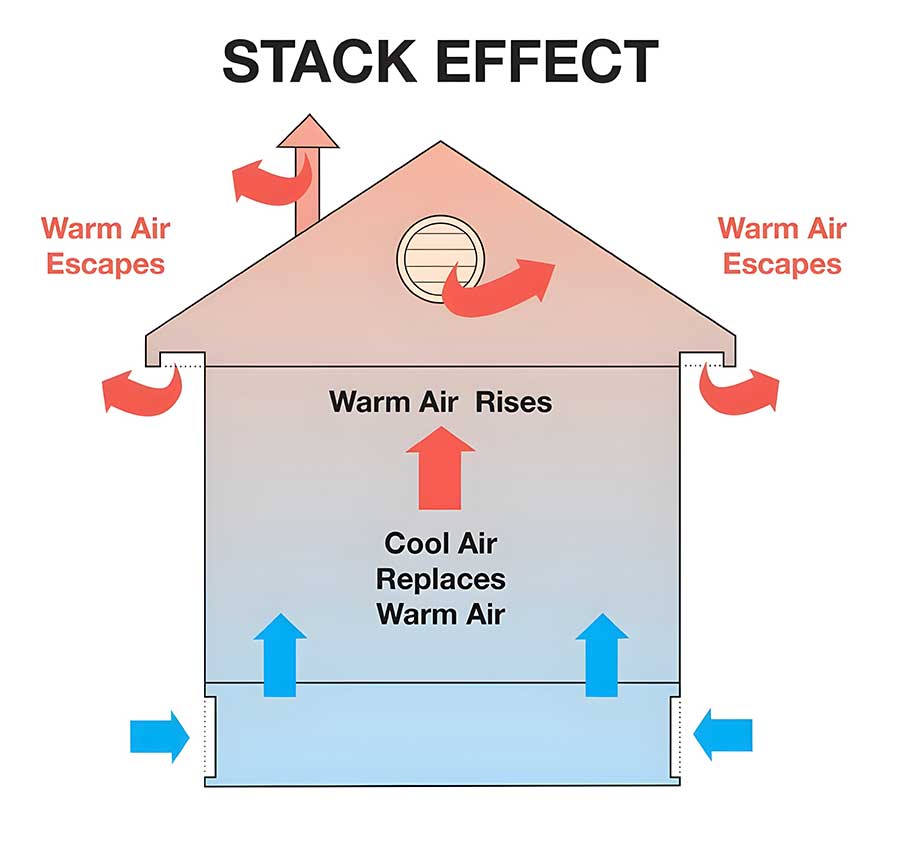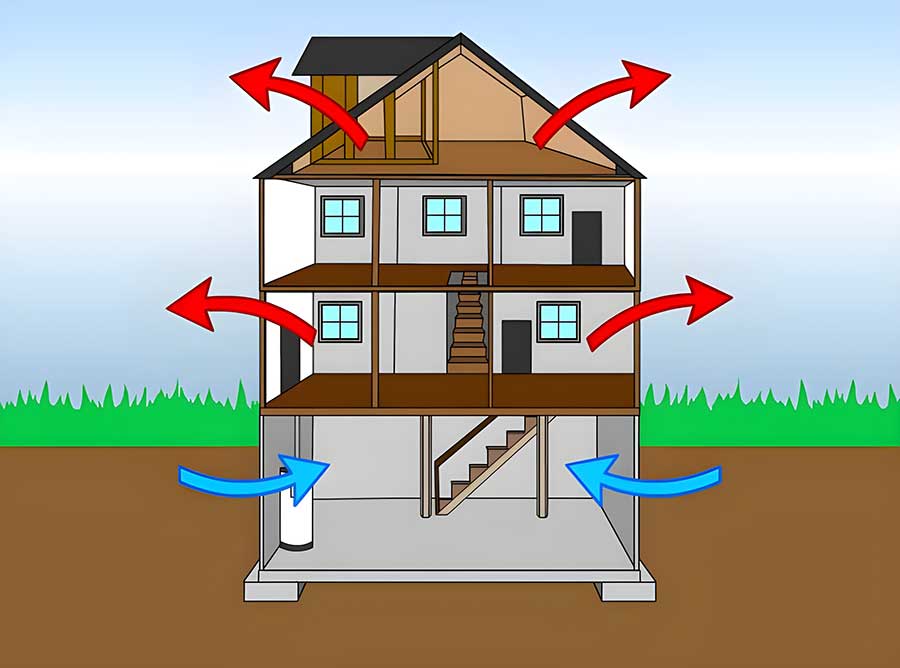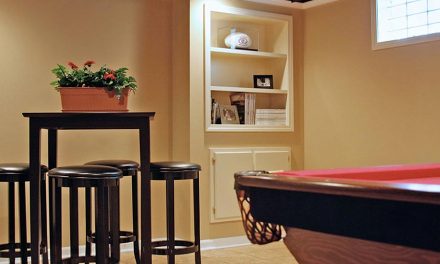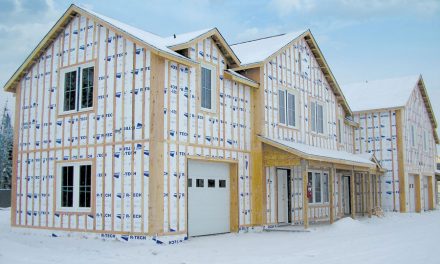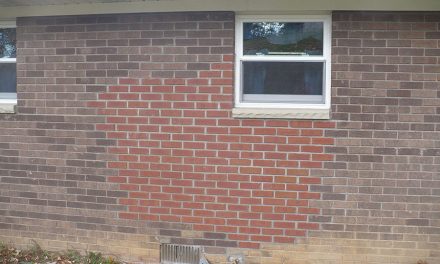By Andre Lacroix and Erika Lacroix
Photos courtesy of Todd Telford
Ventilation reigns supreme in providing a path of escape, a way out, for the trapped moisture vapor, and has proven quite successful in managing humidity problems in basements
Creating livable spaces in basements is a trend on the rise, but take a moment and ask yourself, “Would I live in my finished basement?” What’s the latest, most up to date information you need in order to make the most informed decision for you and your customers? Much has been learned in the post pandemic world about Indoor Air Quality (IAQ) along with updated best practices to maintain an IAQ that supports a healthy home and healthy homeowners.
Over the past three years we have seen a growing trend in the number of homeowners remodeling, renovating, and generally improving their basements to make them usable, livable spaces. Home gyms, rec rooms, home offices, playrooms, man caves, plus additional bedrooms seem to be the most popular inspiration for this wave of basement finishing and home improvement. The current housing market has also contributed to the growth in renovating our own spaces, rather than looking for a new or different house. A finished basement is also one of the best home improvement projects for return on investment.
The last annual Cost vs. Value Report from Remodeling Magazine put the average basement remodel at a 70.3% payback, which made it among the smartest redos, along with an attic bedroom, minor kitchen redo, deck, and new entry door.
We have also seen a heightened awareness among homeowners about their indoor air quality, a topic that had previously seemed to take a back seat to the much flashier remodeling decisions like bathroom finishes or cabinet design. It was only a few short years ago that little (if any) attention was given to the indoor air quality in a basement remodeling project. Now, more contractors and homeowners are addressing the indoor air quality head on, with it often becoming one of the focuses of the project. Further supporting this wave is the growing number of municipalities that now require a mechanical ventilation system to address the IAQ in a basement remodel job in order to get proper permits to complete the project. This focus on indoor air quality is part of the new post-pandemic awareness that is driving more demand for IAQ solutions for finished and unfinished basements alike.
Nick Boever, managing editor for Design Well, an online publication exploring health, wellness, and sustainability within building design and technology, recently pointed out that the coronavirus we’ve been dealing with for so long isn’t the core concern anymore. Instead, what people are worried about is the immediate and long-term impact of just about everything else with regards to air quality: particulate matter, smoke, allergens, etc.
When considering the IAQ needs of a basement, one might think that a finished basement might not require the same approach as an unfinished, unused, musty basement. That could not be further from the truth. A finished basement has specific needs above and beyond those of an unfinished space.
When considering the IAQ of a finished basement, there are three main topics that must be addressed: managing moisture, controlling volatile organic compounds (VOCs), and fighting the stack effect.
Managing Moisture
Moisture in basements must be addressed. To be clear, there are two kinds of moisture. The moisture that comes from liquid, bulk water, oftentimes bubbles up through cracks or gaps in the floor. It can also be water that seeps from the walls after heavy rain. This is a major foundation issue and requires a proper waterproofing system highlighting pumps, drains, and foundation sealing. Ideally, this work was completed prior to finishing the space. The other type of moisture that must also be addressed is the airborne moisture, which is water vapor, often referred to as humidity. This airborne humidity is a result of simply being in an underground space.
Research from the University of Wisconsin reports that “Basements and crawlspaces absorb 10-15 gallons of water vapor every day!” Consider the analogy of gallon milk jugs. This means 10 to 15 milk jugs of water vapor coming in through the porous walls and floor each day. The natural transmission of the moisture in the soil surrounding the house migrating through the walls and the floor is based on the Law of Thermodynamics, which states that wet moves to dry. There is very little we can do to fight the water vapor, or water in its gaseous form, from absorbing through the walls and the floor. Once this humidity is inside the space, it gets trapped and can become a food source for mold, mildew, and pests and encourages rust and dry rot, all of which requires a damp, humid environment to thrive.
How To Address Moisture?
Ventilation reigns supreme in providing a path of escape, a way out, for the trapped moisture vapor, and has proven quite successful in managing humidity problems in basements to ensure healthy and clean air. It is critical to ensure that the replacement air is coming from a conditioned source to establish and maintain healthy humidity levels. Exchanging the damp air for dry air has a profound effect on the improvement of overall air quality as well.
Dehumidifiers can also be helpful in maintaining healthy humidity levels, assuming the proper size dehumidifier is chosen. Too often, too small dehumidifiers are called upon to perform in a much bigger space than they are designed to treat.
Managing VOCs
“Volatile organic compounds (VOCs) comprise various organic chemicals which are released as gases from different liquids or solids. The nature and impact of the health effects are dependent on the VOC concentrations and, also, on the exposure time,” says the International Journal of Environmental Research and Public Health. VOCs are found in various household and commercial products, but their accumulation in the air has gained growing attention as consumer demand for indoor air quality solutions has skyrocketed.
The remodeling process to finish a basement inherently means exposure to these VOCs. Consider the chemicals and toxins being introduced into the underground space during the construction process. Glues, paints, carpets, off-gassing of epoxy and resins, varnishes, and glazes. Many of the materials used in this process are highly toxic, often requiring those working with these materials to wear masks to content with warning labels that instruct “Only use in a well-ventilated area.” The subterranean, or below-ground nature of these spaces, means that basements are the opposite of well ventilated! They are notoriously stagnant, stuffy places.
How To Address VOCs?
The EPA and American Lung Association have identified ventilation as a “key strategy for reducing indoor air pollution.” Considering the EPA reports that state, “the air in the average home is at least 5x more polluted than outdoor air,” ventilation should not only be employed throughout the construction phase but is also critically important as a finishing touch to ensure all those chemicals and toxic materials are not left to build up and concentrate to even higher toxic levels. It’s important to also note that the off-gassing of new materials can last for decades! That “new” smell is actually a highly toxic cocktail of VOCs and is unsafe for humans to breathe.
Air purifiers can also help to lower VOCs. An air purifier will circulate the air through a set of filters and strip out the contaminants that are floating around. This includes microscopic particles such as dust, allergens, mold spores, bacteria, and more. The only catch here is that you need an air purifier that contains certain features for it to create the cleanest air possible. Those features include a true HEPA filter, an activated carbon filter, and ultraviolet light. That combination of features can reduce up to 99.97% of harmful airborne particles down to 0.3 microns in size as well as remove musty odors and kill off germs.
Managing The Stack Effect
Green Building Advisor defines the stack effect as, “warm air near the top of a house is pressurized with respect to the outdoors, while the air near the bottom of the house is depressurized. The air at high pressure escapes through cracks, drawing outdoor air into the house through cracks near the bottom of the house. This phenomenon is called the stack effect.” Warm air rises and since we do not live in a vacuum, it draws with it the air behind it, which often leads to that basement air rising into the living environment. We’ve all heard the homeowner’s concern about being able to smell the basement at the top of the stairs. That’s the stack effect in action. In its most extreme, stack effect can cause a moldy attic! Any inspector worth their muster will tell you the first place they look to as a source of a moldy attic is a damp basement or crawlspace.
When finishing a basement, it’s critical to address the home’s natural stack effect as this process will introduce the once-basement air up into the living environment. Breathing basement air from a recently finished basement can be quite toxic due to the many chemicals and off gassing of new building materials. No matter the basement, unfinished or finished no one wants to breathe basement air!
Addressing the Stack Effect
Creating a resistance to the natural flow of air rising from the basement into the living space is the best way to combat the stack effect for a finished basement. Having a mechanical ventilation system operating in the finished basement will not only help to evacuate the toxic air but will also create that much-needed resistance to keep the basement air from rising up into the living space. This process of ventilating from the lowest level helps to create air exchanges in accordance with the Environmental Protection Agency’s recommendations of 8 times per day, resulting in a much-improved indoor air quality of the entire home.
Investing time and effort into finishing our basements must also include addressing the specific IAQ needs that a finished basement requires in order to yield numerous benefits. Firstly, tackling the IAQ solutions can lead to improved respiratory health, reduced allergies, and fewer headaches and fatigue. A healthier indoor environment also promotes better cognitive function and productivity. Moreover, clean indoor air is particularly crucial for vulnerable groups such as children, the elderly, and individuals with preexisting health conditions.
As we continue to prioritize our well-being, it’s imperative to recognize the role that indoor air quality plays in our daily lives. The steps we take to improve IAQ can have lasting effects on our health and comfort. By adopting simple practices such as regular cleaning, proper ventilation, and conscious material choices, we can create a home environment that supports our physical and mental well-being. Remember, the air we breathe indoors should be as clean and refreshing as the outdoor air we cherish.
Andre & Erika Lacroix
Andre Lacroix, Certified Health Home Specialist, Certified Indoor Environmentalist, Certified Radon Measurement Provider, immediate past president of Basement Health Association, member of IAQA, member of Ohio Healthy Home Network, member of Building Performance Institute, member of Home Ventilating Institute, vice president of EZ Breathe Healthy Home Solutions.
Erika Lacroix, member of IAQA, member of Ohio Healthy Home Network, member of Building Performance Institute, member of Home Ventilating Institute, Certified Customer Experience Executive, president of EZ Breathe Healthy Home Solutions.
Spring 2024 Back Issue
$4.95 – $5.95
Indoor Air Quality in Finished Basements
Options for Waterproofing ICF Pools
Commercial Roof Drains and Drainage Systems
Description
Description
Indoor Air Quality in Finished Basements
By Andre Lacroix and Erika Lacroix
Creating livable spaces in basements is a trend on the rise, but take a moment and ask yourself, “Would I live in my finished basement?” What’s the latest, most up to date information you need in order to make the most informed decision for you and your customers?
Options for Waterproofing ICF Pools
By Aaron King
In a world where ICFs (insulated concrete forms) have rapidly made their way into the mainstream from single-family homes to multistory commercial and schools, one area of huge growth has more potential than all the others, but that potential comes with many technical challenges: Pools.
Commercial Roof Drains and Drainage Systems
By Iko Commercial
Commercial buildings often have flat or low-sloped roofs that need special drainage solutions. This article provides an overview of the types of drainage systems suitable for commercial buildings and the materials and components of those systems, and also covers what kind of maintenance a flat roof drainage system requires.
Additional Info
Additional information
| Weight | N/A |
|---|---|
| Magazine Format | Digital Download Magazine, Print Mailed Magazine |

